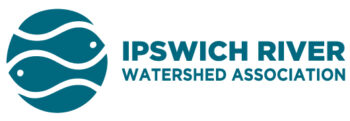Spring is back and so are the fish! Ben Comb catches a brown trout, making quite an impact on his friend’s son, Caleb. Restoring stream connectivity and keeping water clean and plentiful makes for great fishing and fond memories.
Many dedicated volunteers have made the spring herring count program a success over the past 21 years by performing individual counts used to estimate the run size over the season. This year, the fish ladder is open to passage, but physical distancing and the stay at home advisory prevented us from setting up the counting system which includes a large box needed in the fish ladder for viewing, so the count will not be taking place. There are still ways to learn about and observe river herring, however.
We recently recorded presentations on Remembering River Herring and Restoring Stream Connectivity that can be seen on our YouTube Channel along with wildlife footage from the fish ladder and river related topics. These presentations were part of the Ocean of Rivers Project to reconnect people with nature. The Shawsheen River in Andover started a herring count a few years ago and they also recorded a presentation on dam removal projects and their volunteer herring count on the Andover Trails website. Other systems are monitoring runs in the region like electronic counters and a video monitoring system in Plymouth that is live-streamed and where many fish can be seen at different times of the day.
The herring count is an annual event that takes place at the fish ladder in Ipswich as well as at other coastal rivers where similar events can be organized. River herring migrate into coastal rivers each spring to spawn in headwater ponds and other areas with suitable habitat. Herring runs are monitored to track trends in the population and to understand how dams and other barriers impact rivers by disrupting fish passage. The Ipswich herring count has taken place each spring since 1999, recording run size estimates in the hundreds from April to June. Today, the healthiest runs in the region often occur in the hundreds of thousands, but the Ipswich River has dams and other barriers like road crossings that do not allow fish to pass and reach spawning areas.
The Ipswich Mills Dam fish ladder and Willowdale fish ladder remain open so herring and other migratory fish like eel and lamprey can access the river to the extent possible. We are also continuing with other monitoring, restoration and advocacy work to protect the river for people and wildlife.

